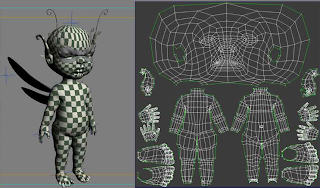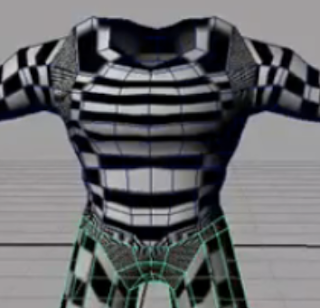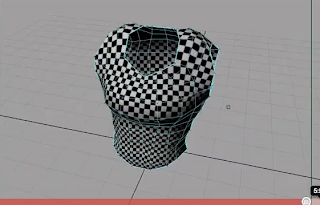I've carried on with the unwrapping of moom
in my last post i had shown i how far i had got, i had done the arm/hand and leg/foot
i am pleased to announce i have finished.
it wasn't the easiest thing i have ever done and i haven't got the best results but it's definitely something i can work on at later date.
next step was to do the main torso. this wasn't too hard. the model not being the most detailed in the body made it slightly easier for me.

as you can see this quite nice, all pretty smooth and the UVs flow nicely which will hopefully show when the checker is applied.
next job was to do the head, tongue and eye socket.
the head gave me real grief... it being a sphere proved very difficult. this was easily the hardest part of the model. you can see how difficult i found it when looking after i applied the checker texture. It was hard not have blatant seams... i think this might be why he is only flat colours and not textured, but who am i to say that? it's just my theory.

i tried a couple of different ways, like having it more vertically set out but i finally settled on having more even throughout, as wide as it is high. as you can see in the above image.
the final two parts i had to do were the eye socket and the tongue.
the tongue mainly staying within the model meant i could do the seam down one side.

and the socket was almost done for me, the rough outline was there i just had to piece in the circles inside each other.

so this completes my unwrapping of moom
next is to apply the checkerboard texture and see how its gone.


as you can see it's all pretty even throughout the body and stuff but the main problem just like i said was with the head.
here are some images of what i am talking about.

the front isn't terrible but could definitely be better.
the back isn't as good...

as you can see there is serious stretching and the seams are very visible. like i said this is something i can work towards to improve at a later stage.




































